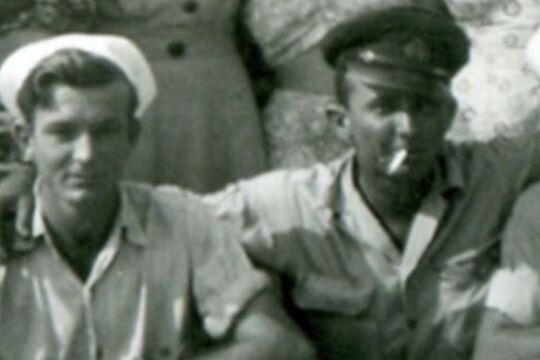Showing 34 items with the theme 'Land And Ecology'
-

Family Stories
From the nuclear to the extended family, from groups of close friends, communities and neighbourhoods, to one on one relationships: family means many different things to different people.
Family describes our most cherished, and sometimes most difficult, relationships. In this collection of digital stories and videos, Victorians share their family stories.
Family stories include stories of immigration; disadvantage and survival, indigenous life, stories of sickness and health; life and death; childhood and old age.
CULTURAL WARNING: Aboriginal and Torres Strait Islander users are warned that some of the videos in this story may contain images of deceased persons and images of places that could cause sorrow.
-
 Elizabeth Downes
Elizabeth DownesTallangatta: The town that moved
Every now and then, when the Hume Dam is at a low ebb, the ghostly remains of old Tallangatta, in northern Victoria, can be seen above the water. Now located 39 kilometres east of Wodonga, Tallangatta is known as 'the town that moved'.
In 1956, 2 hotels, 4 petrol stations, numerous shops and businesses, 4 churches, more than 900 residents and all the usual public amenities of a country town were relocated 8 kilometres west of the old site. The original location was then flooded under 6 feet of water after the Hume Dam was expanded.
During 1954 the State Rivers and Water Supply Commission took more than 180 photos in and around the town, documenting houses, businesses and facilities before they were moved. Other images capture the remarkable feat of transporting the buildings to the new site, such as a weatherboard house being carefully towed toward a narrow bridge. Many photos give a vivid picture of the commercial centre of a small country town in the mid-1950s. Advertising signs promote Sennitts Icecream and The Argus newspaper, cluttered shops are packed to the gunnels with equipment and staples for small town life before large chain stores, supermarkets and cars changed country towns forever.
The shops and houses are distributed along straight Towong Street. Cars were scarce and bicycles were an important form of transport in the wide and mostly empty streets. Men and women in the 2 hotels were still segregated in the ladies lounge and main bar; and the hotel’s kitchen equipment was basic. The town offered butchers, barbers, and hairdressers, while the garages, plumbers, and hardware stores served both town and farming needs.
The Tallangatta photographs are part of The Rural Water Corporation Collection of more than 50,000 photographs held at The State Library of Victoria. This collection covers a range of water management projects and activities during the first half of the 20th century.
